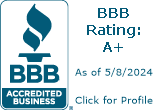One of many important decisions you’ll make when setting up your Solo 401k is who will handle your affairs in the event that you’re no longer able to. This is an important role. Take time and consideration to determine who can best manage the Solo 401k portion of your estate. Let’s cover the 4 W’s (and one H) of the Contingent Successor Trustee.
What is a Contingent Successor Trustee?
The Contingent Successor Trustee is the person who will step in to manage your Solo 401k should you pass away, or become incapable of continuing as trustee of the plan. This role is in addition to the beneficiary designation found in your Solo 401k documents.
What is the difference between a Contingent Successor Trustee and a Beneficiary?
While the Trustee has signatory authority over bank accounts and investments, the Beneficiary will be the person to receive the assets/funds of the plan.
It is important to note that you can designate the same person to be both the Contingent Successor Trustee and the Beneficiary. Your plan can have many beneficiaries, but only one Contingent Successor Trustee.
Let’s look at the example of Tom. Tom has designated his spouse to be both the Contingent Successor Trustee and the Beneficiary. If Tom passes away, his spouse will be able to both manage the plan and also receive the benefits of the plan.
Alternatively, Tom could designate his spouse as the Contingent Successor Trustee and his 3 children as his beneficiaries. Tom will designate who the beneficiaries are and what portion each beneficiary will be receiving on his Beneficiary Designation Form. In this case, his spouse would be responsible for managing the plan and distributing the plan assets/funds to the 3 children.
Who Should Act in This Role?
The Contingent Successor Trustee can be anyone, though many clients elect their spouse for this position. You’ll want the role to be filled by someone you trust to make decisions as to how your Solo 401k assets/funds are handled.
If the beneficiary is a spouse, that individual can do the following with the inherited funds:
- Take a full taxable distribution of the plan assets and calculate and pay taxes for any non-Roth funds
- Roll funds over to an Inherited IRA
- Roll funds over into the beneficiary’s IRA
- Leave the funds in the 401k
If the beneficiary is not a spouse, that individual can do the following with the inherited funds:
- Take a full taxable distribution of the plan assets and calculate and pay taxes for any non-Roth funds
- Roll funds over into a beneficiary IRA
For further resources from the IRS, please see the article on Retirement Topics – Death
Why Do I Need a Contingent Successor Trustee?
It’s important to have a clear distinction as to who will be listed as trustee in the event of your death. A contingent successor trustee will also take over if you become incapable of managing the plan yourself. The death of a loved one can be devastating, and overwhelming. Having a clear plan in place to handle your affairs can prevent a lot of pain and stress for your loved ones.
Let’s look back to the example of Tom. Tom passed away quite suddenly and without warning, leaving behind 3 children but no spouse. If there is no Contingent Successor Trustee designated, and no will to clearly outline who should take over the plan, all 3 children have to determine between themselves who is going to manage this account.
This can be confusing and nerve wracking, especially in the wake of a tragedy. If the siblings are not on good terms, this situation may also become litigious, making everything more difficult.
However, if Tom has completed his Contingent Successor Trustee form this can all be avoided. Tom can list one or more of his children as contingent successor trustee. Then, in the event of his death, the responsibilities of the plan will fall to those listed without a need for litigation or confusion.
How Does it Work?
Your Solo 401k by Nabers Group comes with a Contingent Successor Trustee form, ready for you to complete. In general, the terms of the trust (listing beneficiaries and trustees) may supersede a will. However, it is recommended that this designation is completed in line with your estate planning. Always work with your legal counsel and/or estate planner to ensure your wishes are written down and clear for your loved ones.
Once you’ve determined who to list as your Contingent Successor Trustee, you’re ready to fill out your designation form. This form can be found within your Solo 401k documents. You’ll need to notify this person as they will have to sign the designation form acknowledging that they will act as trustee in the event of your passing. Make sure you both sign and date the form to make it official.
When Should I Get Started?
We recommend that you complete this form as soon as possible after setting up your Solo 401k. “The sooner the better” certainly applies to this situation. Completing this form will only take a few minutes and once complete should be stored in a safe place. You do not need to send the form to Nabers Group or your document provider. However, if you have an estate planner, it’s a good idea to share a copy of this form with them as well.






One Response
My brother passed away 5-28-22 He had a Solo 401K account at Fidelity. His daughter tried to access the account with the Probate letters of Administration. Fidelity Investments said that the Trust Document she provided showed me as co-trustee, trustee, and or successor trustee but shows no beneficiaries. They are not very transparent about the whole thing. They say the document has no footer or anything to show who prepared the document. They want a court order saying who to re register the 528K account to (and not the Probate Court). I told them that if indeed i am on there in any capacity as trustee they must turn the document and the account funds over to me. I will seek out who made the doc they (and her) hold, the actual trust, the trust agreement, the trust basic plan, and the consent decrees by the company for adoption of the plan and appointment of the Trustee.
I will then manage the pan and distribute any funds to the named beneficiaries once a diligent search for the beneficiary form is compete. If none found with a reasonable time frame then per the state rule for intestate estates. (Unless some Malfeasance showing possible deceit, alteration, destruction, or concealment of any trust documents by any beneficiary) – (can a successor trustee do that that – what powers does the trustee have when he suspects malfeasance)